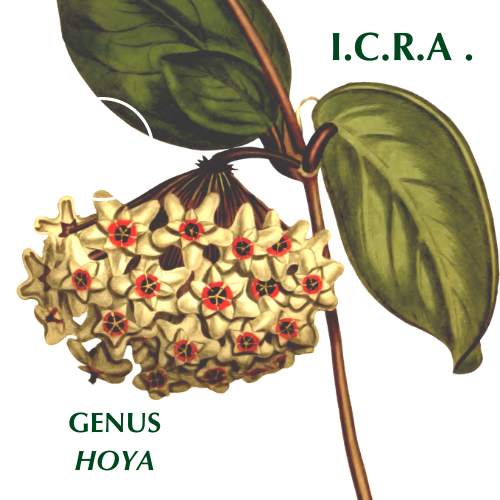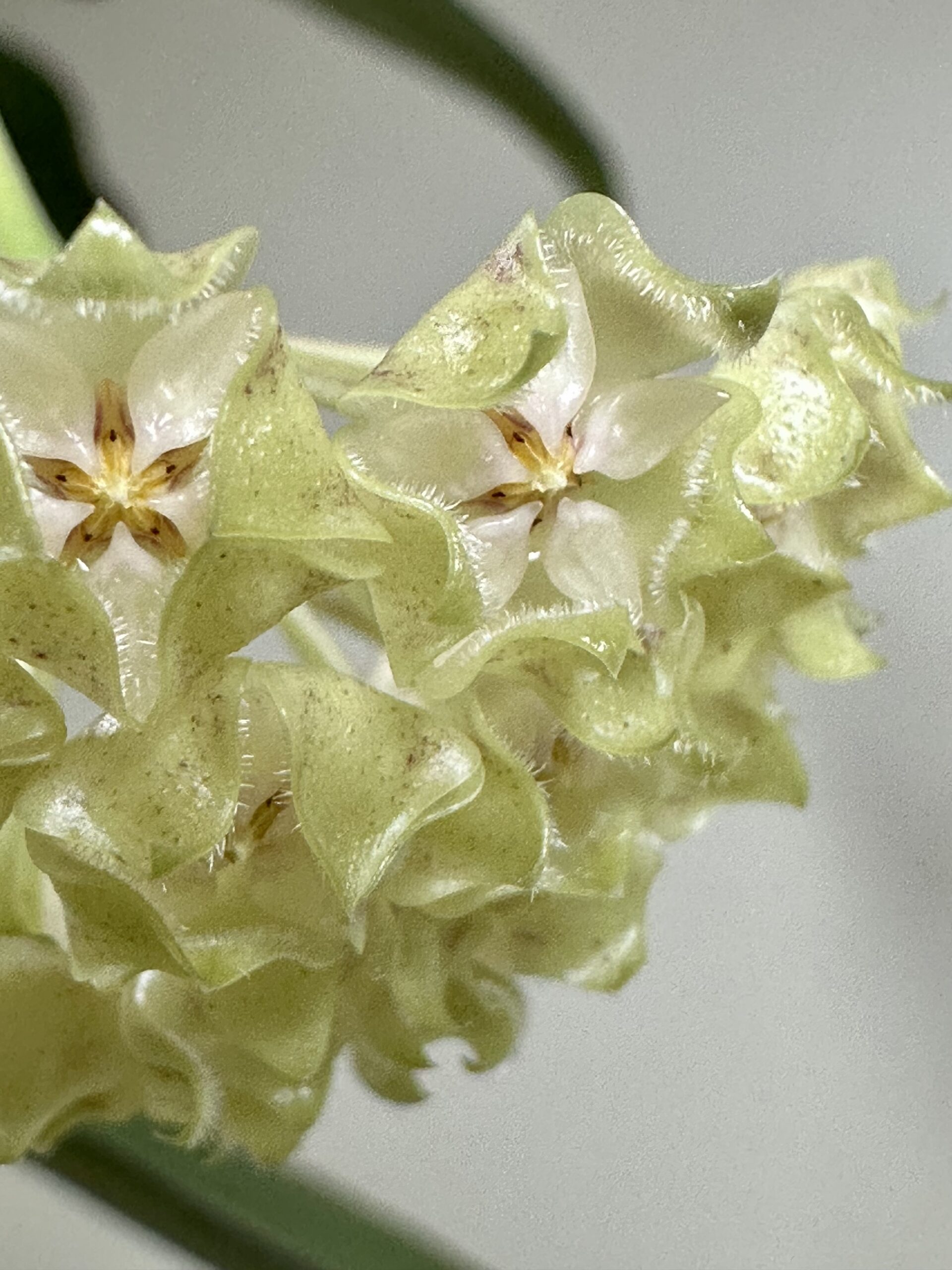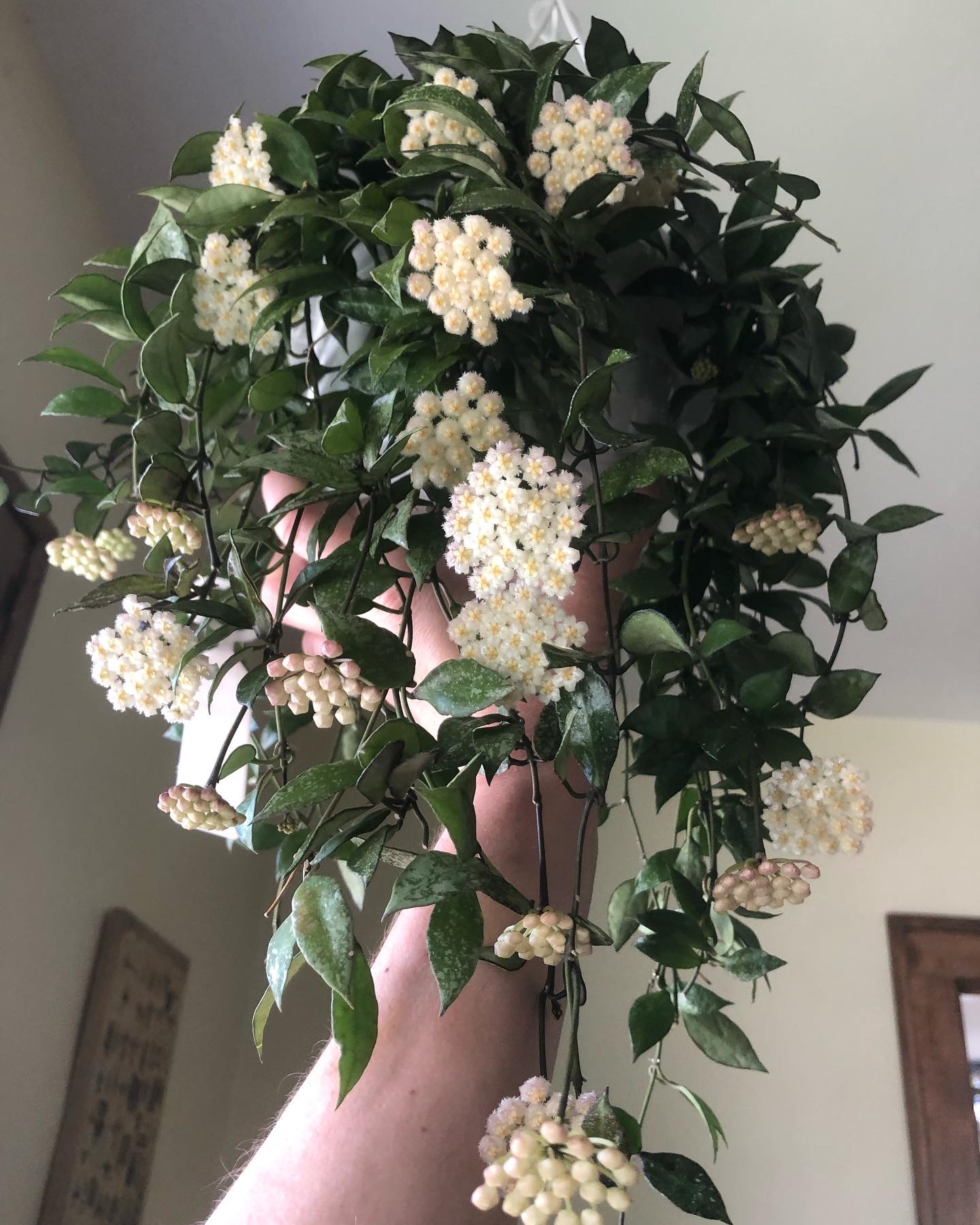Full name: Either Hoya erythrina ‘Maliksi’ or Hoya ‘Maliksi’ may be used. The known pod parent is a published species which provides further information about this cultivar.
Status: The Accepted name for a unique cultivar. Submitted to the ICRA 2024 and accepted as a new cultivar 4/2024. Published in print with a description by Hatch,L.(2024).Houseplant Cultivars (Vol.III).p.157.
Category and background: Open pollination produced from the selected seedling on a Hoya erythrina pod parent.
Originator & Registrant: April Mall, Unsolicited Plant Talks Yucaipa, California
Grower Code: UPT001 (UPT = Unsolicited Plant Talks)
Nominate: April & Daryk Mall of Unsolicited Plant Talks. This is the Tagalog word for ‘fast’, and the name of the first of their seven dogs. They felt that ‘Maliksi’ described the “rapid growth rate of the plant and its ability to bud and flower in home settings when given ample light.” They also wanted to honor their special Maliksi dog with the naming of their first cultivar, as she played a “pivotal role in safeguarding our greenhouses.”
“Few Hoyas on the market exhibit textured leaves with pronounced dark margins. When grown in a bright environment, the veins on the leaves of Hoya ‘Maliksi’ become more pronounced, creating a unique texture. This is further accentuated by its striking dark margins.”-April Mall
April Mall, Originator
Description: (Leaf texture and appearance)Raised, obvious palmate venation with a deep cordate to broadly rounded base. Leaf tip aristulate, less acute than in the known parent erythrina. Three central veins and two less prominent side veins, similar to the parent but significantly less flexible and delicate. ‘Maliksi’ does not sun stress in the central parts of the leaf blade. The leaf margin is deep purple and varies in presence dependent upon light exposure. (Inflorescence) 24 average individual inflorescence per positively geotropic umbel. Pubescent corolla like the pod-parent, but differentiated in that the new cultivar has corolla pubescence which is significantly less dense. Coloration of corolla lobes are cream throughout in average conditions, with a pale yellow-green (RHS 4D) undertone. A pale red to moderate reddish purple which can appear pale brown at times and is described as mauve, is present in the tips of the inside surface of the corolla in higher light (RHS 182B-182A). The outside surface may show spots of these same colors. These color changes are due to the anthocyanin which also bring out the purplish red attractive margins in the leaves. Additionally differentiated from the pod parent by obtuse versus acute corolla lobes. The corona lobe is white-clear and differentiated from the pod-parent in that it is spatulate. The blooms fade fast, lasting only 36 hours from antitheses to closing again and dropping, but a mature plant is in bloom all of the time. The nectar needs to be cleared from the peduncle in cultivation if it gets a heavy build-up and where rain or sprinklers does not do the job.Fragrance is very subjective, but this one is a highly fragrant Hoya by all accounts. One observer likened it to ginger. To the originator it “carries a citrusy undertone complemented by other aromatic nuances, including ginger”. Lemongrass, pine needles, sandalwood.
Hoya ‘Maliksi’ inherited the leaf veination from its mother, Hoya erythrina, and in some aspects of the floral appearance. Hoya ‘Maliski’ has a different corona. Both plants exhibit leaf color changes when subjected to bright light or cold temperatures. However, Hoya ‘Maliksi’ has noticeably thicker stems, more succulent leaves, a rapid growth rate, and the bloom and growth rate in multiple conditions for which it was selected. Hoya erythrina can be a difficult Hoya to grow, particularly in lower humidity environments. Hoya ‘Maliksi’ brings some of my personal favorite features to the horticultural market along with the ease of growing year-round.
April Mall, Originator
Availability: Hoya ‘Maliksi’ is widely available in the United States (including directly from the originator at Unsolicited Plant Talks). If it has not traveled overseas to Thailand, Sweden, and Indonesia yet, it likely will soon.





A live specimen from April Mall is pictured here and held at the conservatory of cultivars in Michigan, U.S.A. numbered RC-713.
Two herbaria have been prepared and a duplicate live specimen has been propagated from the material sent from April Mall. These are currently available for view at the conservatory of cultivars (MHC) with the ICRA but will be sent to Huntington (HNT) with the print registration, while leaving a duplicate herbarium on file. The herbaria are labeled:
Hoya erythrina ‘Maliksi’, Open pollinated seedling of Hoya erythrina, Registered cultivar genus Hoya. If a barcode or catalog number is added, this will be appended here with date.
Originator April Mall; Yucaipa, California. Designated R.Colette Conroy.
Update 5/25/2025; the publication from Hatch,L 2024 is additionally included as part of the file for this cultivar and the establishment of the cultivar name itself with a description. The known parentage must still be correctly published when ‘Maliksi’ is registered.



